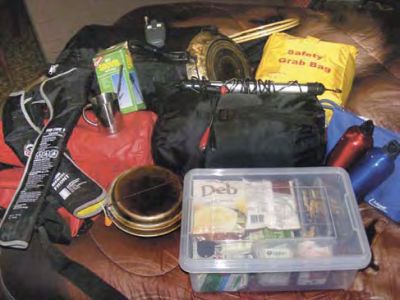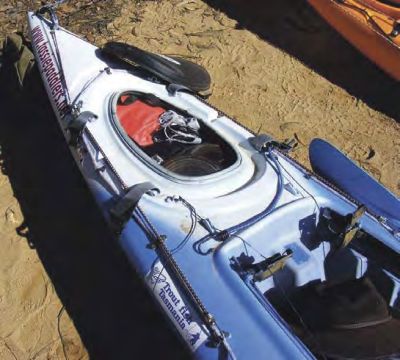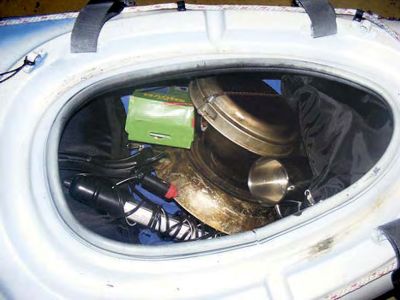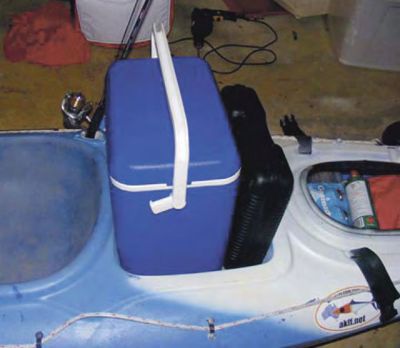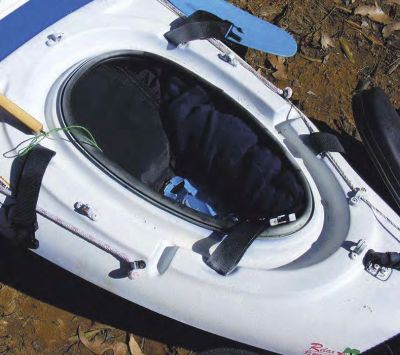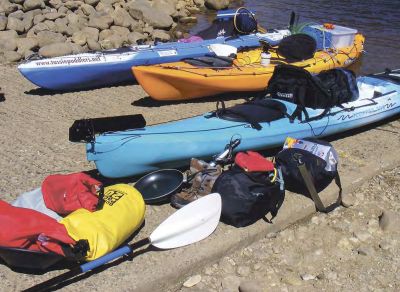 Presented from Issue 107, December 2013
Presented from Issue 107, December 2013
For those that haven’t packed a kayak for a 3 or 4 day adventure this how I go about it. Firstly remembering your weight: I am about 100kg and I sit more toward the back of my yak – not in the middle as some are designed. Therefore I must think about how and where I am going to pack my gear.
Prepack at home
Do a prepack first at home. This is vital to ensure it will all work, you have enough dry storage, enough straps etc. Stow your gear in those cheap plastic bins to transport to your destination – and in roughly the order they will go into your yak and relevant to each compartment. Of course if you are using waterproof bags they can be packed ready to stow straight into your yak.
Once at your destination — and before you start packing, make sure it is close to the waterway you are going to be travelling on. It will be heavy by the time you have finished packing. If you can’t get close a yak trolly will be handy once loaded to wheel it down to the waters edge.
Pack from the back
I always start loading at the back of my kayak as that is the part that hits the water first. So remembering lighter stuff goes in the back hatch or well. Things like your food, clothing fold up chair, gas cylinders, fishing tackle and fishing rods. Moving along to the centre hatch this normally has a screw tight lid, Great for stowing things like camera, keys a small tackle box with lures in it. Now for the front hatch where you stow all your heavier stuff like your tent, sleeping bag, lilo or camp mat, lighting equipment, light and batteries, cooking utensils, Trangia, fuel bottle, frying pan, pump for your air bed.
Remember, when packing all this stuff pack it in a way that the weight is evenly distributed on both sides and down the middle. If you don’t your kayak will list, but this can be fixed by readjusting your load.
Lightweight costs money
Just a reminder about weight. My tent alone weighs 6 kgs. You can buy them a lot lighter and 1.3 kgs is about the lightest. With everything in camping as weight drops prices go up — as generally does quality. Buy the best you can. You will never regret buying good gear.
Keep your weight down wherever you can this may seem an excessive amount and to some it is but I have load all this in my yak before and it works perfectly. I am with in my weight load and have always had a safe and comfortable adventure.
Make a list
My list has the following: Tent, sleeping bag, bed mat, change of clothes, fold up chair, 20lt esky for food, fishing gear including rods/ tackle and bait/worms, lighting for the campsite with a small gel cell battery, tarp, set of wet weather clothes, 1 frying pan and pot, small gas cooker, knife fork spoon bowl and plate, first aid kit, safety gear — flares, grab rope, head lamp, matches or lighter, mobile phone, hand held UHF, GPS, AA + AAA Batteries, spare collapsible paddle, pocket knife or multi tool, sunscreen, map of area, compass, EPIRB.
One idea to keep in mind is: When you unpack note the most used, and also the unused items. There will also be things you didn’t have. Modify your list every trip and you will soon have a detailed account of what suits you. Always let someone responsible know where you are going and when you are due back. Enjoy your yakking.
Terry Symons
Some supplies and storage ideas